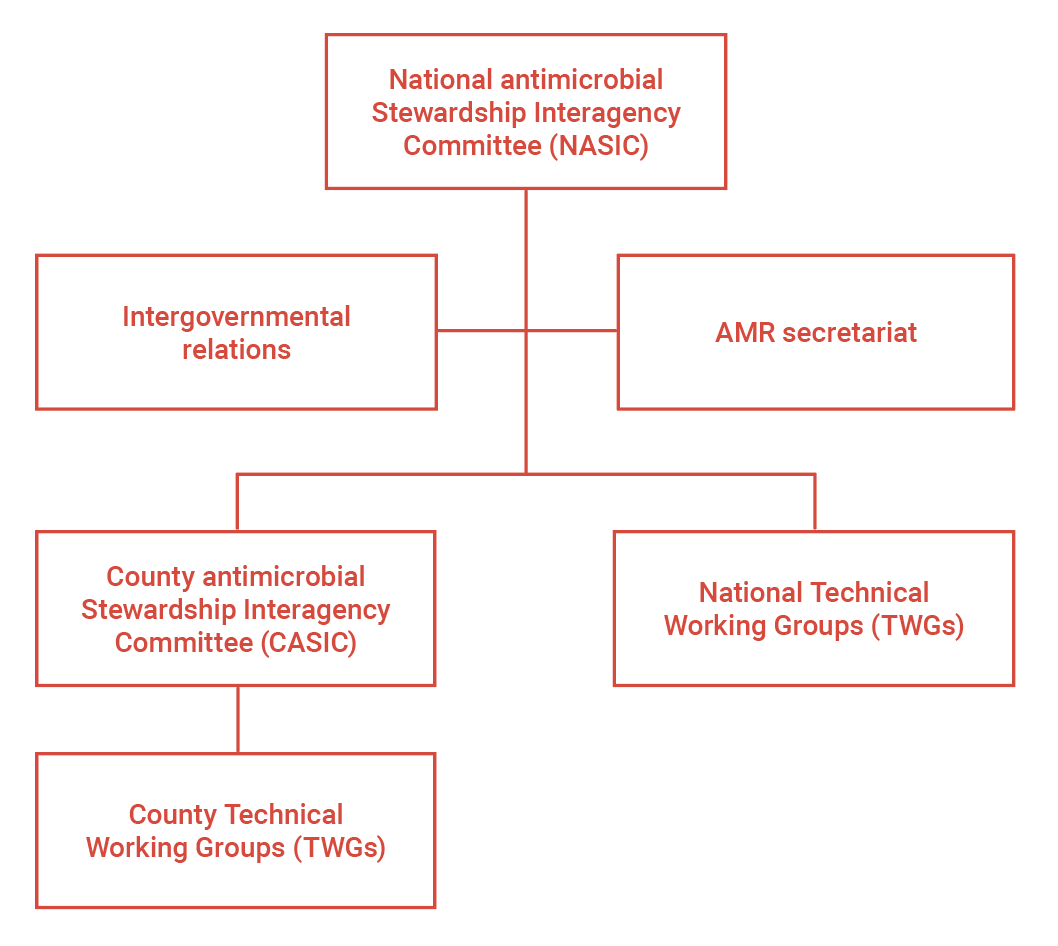Kenya has carried out AMR surveillance as far back as the 1980s led by Kenyatta Hospital, the national referral hospital. But because most health facilities are not well equipped with microbiology laboratories to measure AMR, almost all AMR data is generated by academic research scientists at the Kenya Medical Research Institute (KEMRI) and sentinel sites that have been set up to address specific pathogens of interest. There is limited microbiology diagnostic capacity, but there are ongoing efforts to expand microbiological testing capacity. There is a lack of routine surveillance data, and the few data from hospitals often represent samples taken from patients not responding to treatment. Therefore, local data on antibiotic usage and antibiotic resistance are not generalizable because of limitations in methods. Consequently, the situation of AMR in the country is uncertain.
A situation analysis on AMR in Kenya conducted by the Global Antibiotic Resistance Partnership in 2011 and updated in 2016 recommended a coordinated national surveillance mechanism and strengthened laboratory capacity to provide the necessary data for risk assessment of AMR. Since then, Kenya has made significant efforts to put in place governance and national surveillance data systems for AMR. However, there is certainly still room for improvement.
We have not had a national report that will tell us this is where we are at in terms of AMR. What we have relied on over a period of time is data that has been generated by different researchers. And this has probably been done in different parts of the country, but it’s not regular or routine data that’s coming in through a national database.... You cannot make policy decisions, sometimes, without local evidence. So that has been a gap, but is currently being addressed through the efforts of various partners.”
Governance
The AMR National Action Plan 2017–2022 is the national guide for coordinated response against AMR. It is modeled on the Global AMR Action Plan, which was developed in 2015. The five key objectives of the national action plan are:
- Improve awareness and understanding of AMR through effective communication, education, and training;
- Strengthen the knowledge and evidence base through surveillance and research;
- Reduce the incidence of infection through effective sanitation, hygiene, and infection prevention and control measures;
- Optimize the use of antimicrobials in animals and humans; and
- Develop an economic case for sustainable investment that takes into account Kenya’s needs, and increase investment in new medicines, diagnostic tools, vaccines, and other interventions.
Leadership
The country has put in place leadership structures to implement the National Action Plan at the national and subnational (county) levels. Not all counties have put in place AMR governance mechanisms. The AMR action plan and governance structures take a One Health approach that encompasses human, animal, and environmental health.

Data on AMR
The country has reported to GLASS for two consecutive years. The 2021 GLASS report indicates that Kenya has five AMR surveillance sites participating in the national surveillance system, but no AMR data has been submitted from the country.